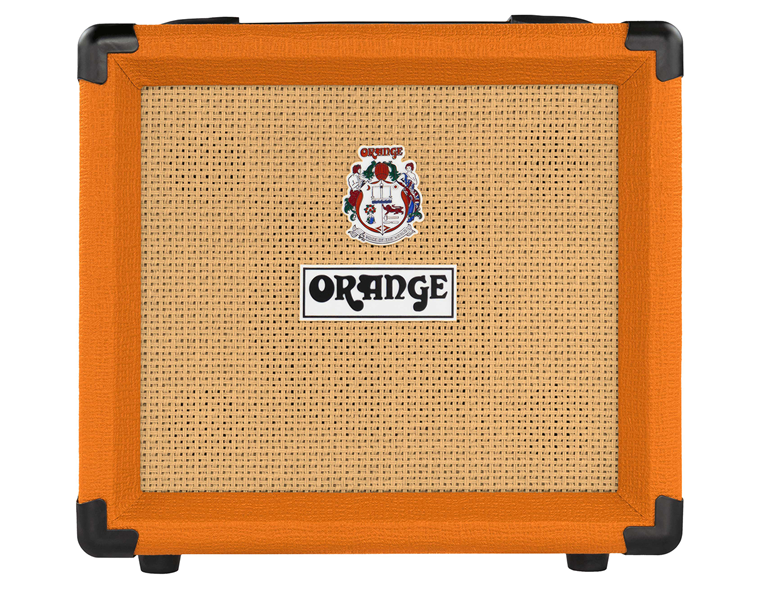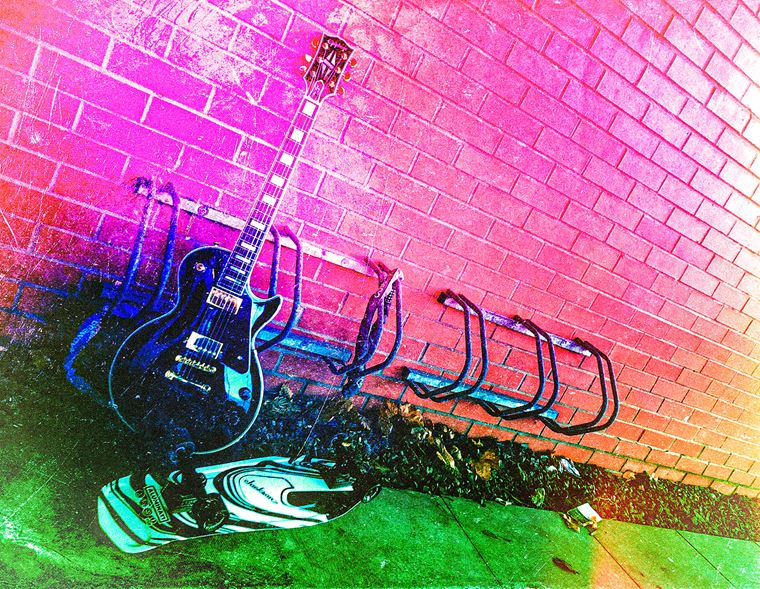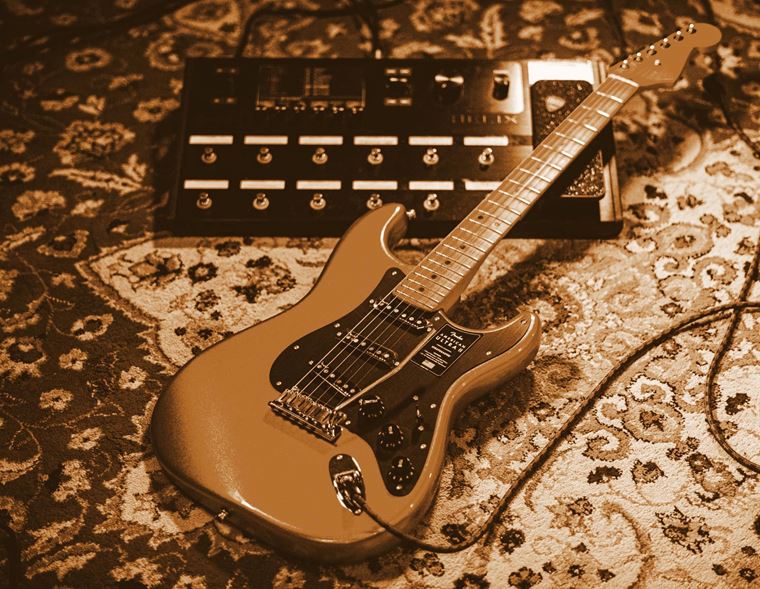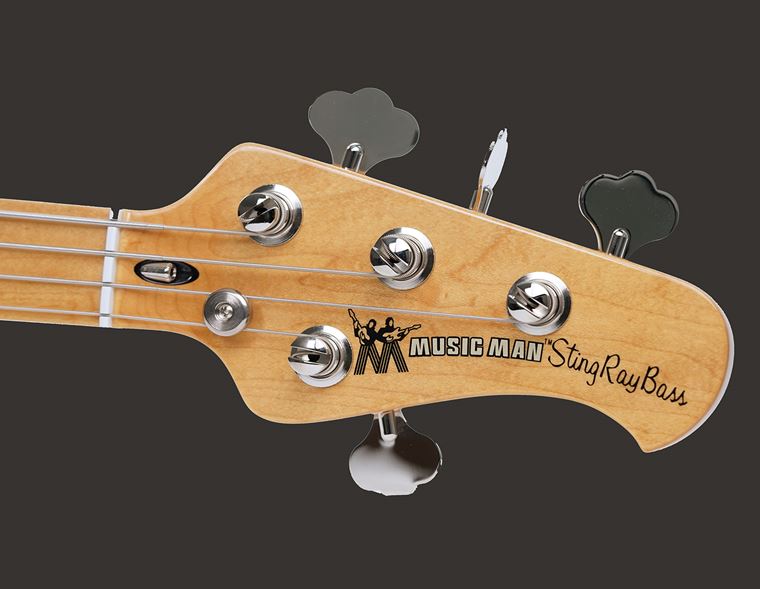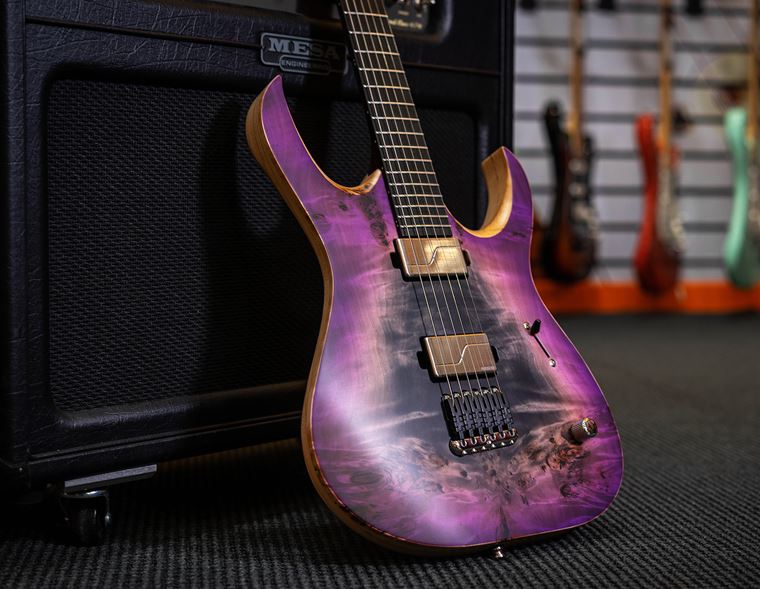Quad Cortex: The Long-Term Review
Published on 12 April 2024
Last year, I took a Neural DSP Quad Cortex unit home with me for an in-depth prod around. Whilst it’s true to say that, as a team member at guitarguitar, I get my hands on an outrageous amount of incredible gear, it’s also true to say that these encounters are mostly fleeting. Two or three minutes with a Murphy Lab ‘59 Les Paul is easily enough to convince of their worth, but three minutes with something like the Quad Cortex is never going to reveal much.
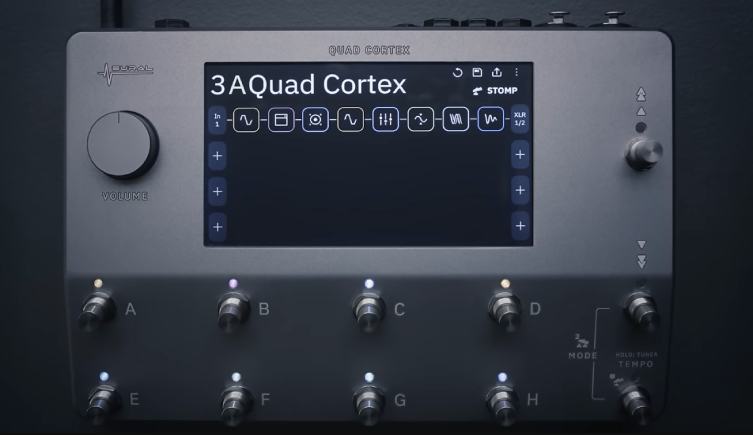
So, I took it away and had a good few in-depth sessions. My reports are detailed in the Quad Cortex vs Helix vs Kemper blog, so click back there if you fancy the details, but to recap: I thought the unit sounded quite incredible, but I was unimpressed with the UI, I didn’t like the non-seamless patch changing and wasn’t into their logos/icons (the Overdrive icon looked like what a modulation icon should be to my eyes, and so on). Overall, it was the best sounding unit of all that I had tried, but other elements left me lacking. Also, Why couldn't I have my Neural DSP plugins in the Quad?
Contents
Quad Cortex vs Fender Tonemaster Pro
One Year On
Well, a year has passed, and we at the office decided to see where my outspoken opinions were now lying. We’ve made a lot of use of the QC (as it’ll now be known in this blog) for our YouTube videos and so on, so I’ve had lots of regular hands-on experience with it. My colleague Keiran has dived deeply into its architecture too, so I’ve learned things from snooping over his shoulder.
Today’s blog is something of a re-assessing. Are my feelings for the QC as they initially were? Have things changed - for the better or worse - as the year has passed? Does the firmware update address any of my beefs?
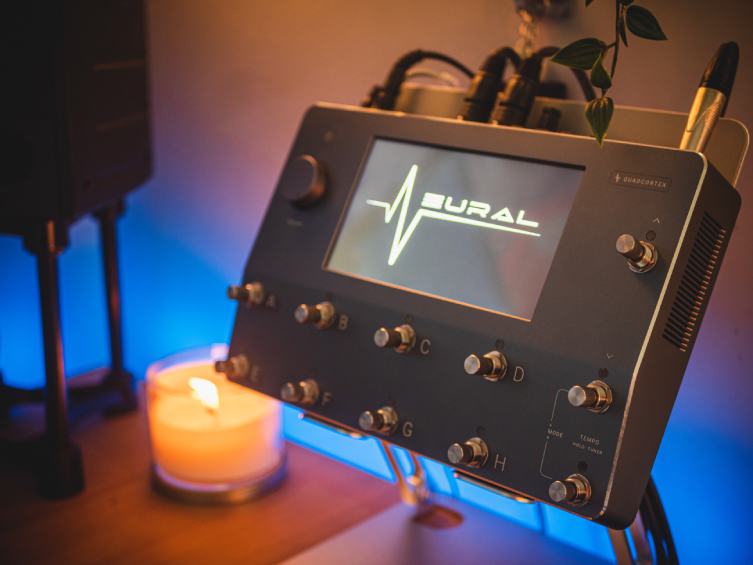
A Quick Recap
Before I run through my long-term findings, a brief word of context regarding my position with these units, and my experience. As of writing, I’ve been playing guitar for 30 years and using effects (including multi-effects, which is what these digital modellers used to be called) for at least 28 of them. I’ve almost never been interested in running a guitar straight into an amp without having something in between to change the sound.
As a result, I’ve had lots of practical experience - both gigging and in the studio - of effects from BOSS, Line 6, Digitech, Korg, Fractal, Kemper and endless stomp boxes, from cheap RockTek pedals to handmade boutique units. I’ve had my hands on it all, and giddily stomped over literally hundreds of pedals, making them a necessary part of my expression as a musician.
So, when I approach this Quad Cortex - and others like it - there may well be biases or learned behaviours/expectations about how things will work, but the point is, it’s based on uncountable hours of hands-on experience.

The Return to the Quad
So, we decided I should return to the QC and see how things are a year later. In that time, Neural have updated the firmware, included a looper and added a ton of new sounds in the form of amps and effects. I’m loving the names of some of the copyright dodges here: ‘Chief DS-1’ and ‘D-Cell’ are cracking me up! Funny names aside, the new amp and pedal sounds are as excellent as I’ve come to expect from Neural DSP, so it’s a great addition to have so many famous tones available.

Archetype Integration
I’m still awaiting the Archetype plugin integration that has been long-promised, but only because I use a few of these plugins regularly and would love to incorporate them into my playing away from the computer. I have no beef with the sounds on board at all - they are as world class as they were before! - but it’s more about getting the specifics right that I’m interested in. I’ve created some much-loved patches using Neural’s Fortin Nameless & Mateus Asato Archetypes, and having them available anywhere I play via the QC would be tremendous, particularly when it’s the same company making all of the products.
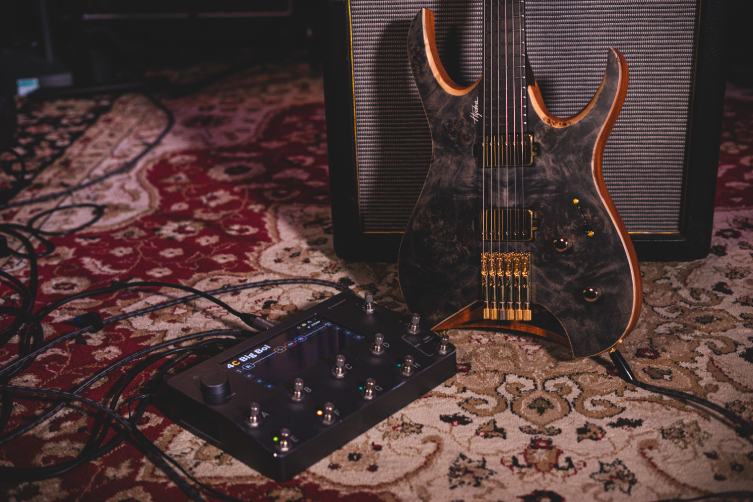
Seamless Patch Changing
One of my biggest complaints was the small moment of silence that occured when changing patches. I found that to be a pretty major issue, being somebody who likes to change sounds frequently mid-song. I need the delays and reverb trails to carry over, and I certainly can’t have a gap in my sound every time I change patches. I found this really off putting at the time.
Thankfully, my colleague Keiran found a better way to employ the Quad Cortex’s much-trumpeted mass of processing power. The workaround is to use ‘Scene’ mode, which is very much the same idea as ‘Snapshots’ on a Helix. There are four signal paths within a preset/patch, and each of those paths can actually contain different amps and pedals - as in completely different. You load up the entire patch and then switching between each of the four paths is seamless! Joy! If, like me, you’ve always wanted to instantly jump between a clean Jazz Chorus sound and a fire-breathing ‘D-Cell’ (Diezel) amp, this is how to do it! This method utilises the unit’s inherent power in a way that’s sensible and smart. Too smart for me last year, it would seem!
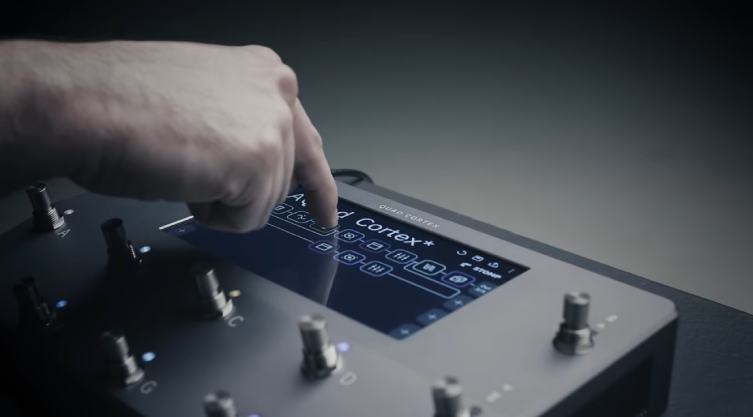
Iconography
One part that hasn’t gotten any easier for me is the way the graphics and icons have been designed: they still look like they are for the ‘wrong’ effects, as I outlined earlier. It may be entirely because I’ve been schooled for decades on the hieroglyphics of other brands, but these all still seem pretty backwards to me. Let me say that if you are relatively new to digital modelling, then you are unlikely to feel this particular issue the same way I do!
I also believe the system for saving sounds is a little backward and convoluted. I’d like to be able to go ‘forward and backwards’ within my patches (in terms of making selections) without losing what I’ve done. Unless I leave a patch to navigate elsewhere, I want the unit to keep my decisions as they are, whether I’ve hit ‘save’ or not. It’s not a big grumble, but it’s enough for me to have lost a number of very carefully built patches, so it’s enough for me to mention.
Now, for the skimmers out there, here are my findings/opinions in bullet form:
Quad Cortex Plusses
- It’s the best sounding modeller out there, in my opinion
- The new amps and pedals increase the value and fun
- Once you know your way around, there’s SO much potential
- The unit itself is very satisfyingly built, and the switches/encoders are genius
- Future plans (Archetype plugin integration mostly) could make this the ruler of the digital kingdom
- Firmware update was a big step up, for the looper and more
Quad Cortex Minuses
- The user interface still throws some unfortunate editing curveballs
- No Archetype integration as yet
- Graphical interface is not as intuitive as it thinks it is. Still too many pop-up menus
- I still miss having an expression pedal!
Quad Cortex vs Fender Tonemaster Pro
In the space between my first look at the QC and now, Fender have of course released the Tonemaster Pro modeller unit. How does it stack up to the QC?
Well, I certainly enjoy making sounds and editing them on the Tonemaster. It’s fast and easy, with a vibe that’s quite simple on the surface. This simplicity, I should probably qualify, is not actually my preference: I really like how complex you can get with the QC, it’s just the way the Neural goes about it that gets in my way at times.
Sonically, in my personal opinion, the QC is the better of the two. I can hear it mostly in the high gain stuff, but across the board, I think the Neural just has that extra tint of believability that convinces my ears and my reactions.
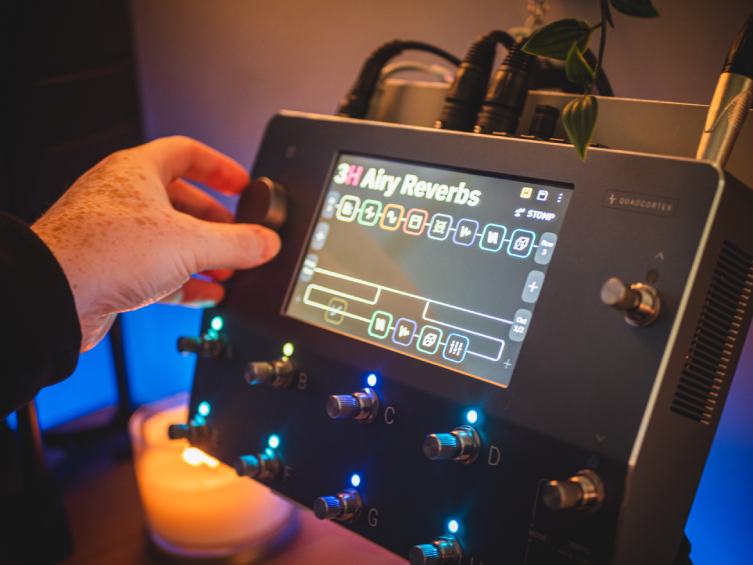
The Quad Cortex in 2024
It’s hardly an old product, so talking about how it’s faring in 2024 is a bit premature, isn’t it? That said, Line 6 are reputedly working on a follow up to the mighty Helix, so the coming year could be really quite interesting for digital modelling enthusiasts.
As of right now, this second, my personal opinion is that the Quad Cortex is the best sounding digital modeller on the market. For some players, other factors might be more important - control, connections, interaction etc - so I’m not really trying to comment on any of that. You’ll know what you like and what you need, but if straight up tone is your ultimate goal, then I reckon you’d agree about the sounds of the Quad Cortex.
The stuff that bugged me has been greatly enhanced, but it’s not all gone away, so I still have some reservations. I expect that it’s a matter of moving past my own programming, so to speak, and getting more on board with theirs, but it’s a fact that I find all of the other units (Fender, Kemper, Line 6) easier to work with.
I’m not obliged to favour one over the other here, I’d point out. I don’t own a QC, nor have Neural asked for my feedback or endorsement on anything. I’m just a guitarist like you, who gets to have a good shot on a lot of this stuff. My opinion is that the QC can be better in a few ways, but in the one that matters most - the sound - it’s the best.
Click to View the Neural DSP Quad Cortex




